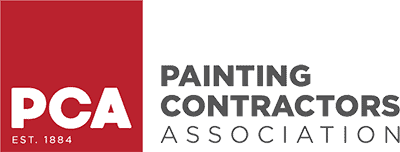You’re planning a home improvement or house painting project, and it dawns on you: the old paint or stain will have to be removed before you can get started.
Whether you’re planning for deck refinishing, cabinet painting, or a smaller project like baseboard and trim painting, sanding is a step you can’t skip. It’s a must when it comes to surface prep for any interior painting refreshes or exterior painting projects. Here are some sanding dos and don’ts from the experts at TRICO PAINTING.
How to Properly Sand
DON’T: Use an Incorrect Setting for Sanding Tools or the Wrong Kind of Sandpaper
If you’re thinking of using a sanding tool, familiarize yourself with the settings. There’s always a setting for RPM: rotations per minute. A higher RPM might remove too much material and might even burn the wood. Or even create burn marks.
Similarly, using the wrong grain of sandpaper can either not remove enough imperfections or can scratch the wood in a way you never intended. The right choice varies by project but generally depends on the material. Harder materials can handle a faster sanding speed, while softer materials likely need a lower RPM setting.
DO: Wear Protective Equipment and Ventilate the Area Where You’re Working
Some people don’t realize that sanding is a risky activity. Sawdust is harmful when inhaled, so proper ventilation is important when it comes to sanding surfaces. If these surfaces have previously been painted or covered with a natural wood staining solution, you should be doubly careful since paint and stain particles are toxic, too.
For similar reasons, you should take care when sanding metal and fiberglass. Wearing a face mask that covers your nose and mouth, and safety goggles, will prevent undue inhalation of any harmful particles, and will keep your eyes protected from irritants. Protective gloves are also recommended any time you use tools or equipment. Because sanding impacts the air quality, we suggest doing sanding outside or in a well-ventilated area whenever possible.
DO: Test a Small Area of the Surface
To avoid damaging the wood, test your sanding tool or sandpaper on a small area before diving into your sanding project or sanding a highly visible area of the wood. Experiment with different RPMs or a few different types of sandpaper on some scrap pieces of the material you’ll be sanding, and see how different settings or grains of sandpaper affect the look of the surface. Do the same with varying amounts of pressure on the sandpaper or the sanding tool. Using a heavier hand runs the risk of damaging the surface further, even if you’re using a lower RPM.
DON’T: Sand Against the Grain
The naturally occurring lines and rings on cut wood are called the grain. When you start sanding, it’s important to move the tool or push the sandpaper in the same direction as the wood grain. Sanding against the grain with coarse sandpaper or with a heavier setting will likely cause splinters, chips, or scratches, which become more visible after painting, staining, or varnishing wood.
DON’T: Paint Without Sanding Off All of the Old Paint
It’s important to remove all the old paint before adding new primer, paint, and wood stain to any surface. That means that surfaces will need to be completely sanded down before painting can begin. Otherwise, paint will not be applied evenly and will not dry properly, leading to issues with the paint finish from day one. No one wants to plan for a repaint as soon as the paint or stain dries, so do whatever you can to ensure you’re dotting your i’s and crossing your t’s when it comes to surface prep.
Reminder: If you’re painting exterior walls and surfaces, you’ll need to plan for pressure washing as well as sanding to clear your surfaces of more stubborn grime and debris.
DO: Check with a Professional Painter
By now, it’s pretty clear that there are a lot of variables and a lot of potential mishaps that could arise when sanding ahead of a painting project. If you have any doubts or misgivings, or any concerns about your safety, check with a professional painter before going the DIY route.
TRICO PAINTING provides thorough surface preparation services, including sanding, as part of our cabinet painting services, interior painting, and exterior painting projects. We are familiar with the appropriate sanding techniques for each wood surface, and are committed to preserving the structural integrity of the underlying surface.
We’re trusted by homeowners, HOAs, and business owners in Roseville, CA, and the surrounding communities to leave every surface stronger and more beautiful than ever. There’s no need to stress over sanding and painting. Let us take care of the ins and outs, so you can get back to enjoying your property sooner. Contact us for a painting project estimate today!

